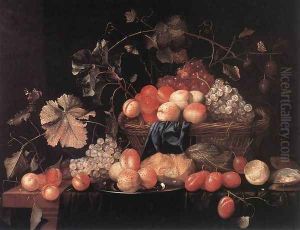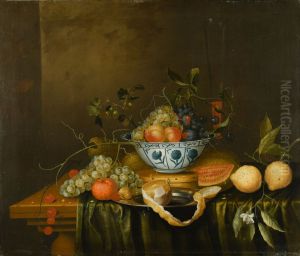Theodoor Aenvanck Paintings
Theodoor Aenvanck was a Flemish still life painter, known for his detailed and refined depictions of flower pieces and banquet tables. Born in Antwerp in 1633, he was part of the Baroque period that was characterized by dramatic expression, deep color, and intense light and dark shadows. Aenvanck's work is often noted for its meticulous attention to the natural qualities of the objects he painted, including the texture of flower petals and the translucency of glassware.
He was a pupil of the prominent still life painter Jan Davidsz. de Heem, who had a significant influence on his style and technique. Aenvanck’s paintings typically feature compositions with a sense of abundance and a variety of objects, often including fruits, flowers, and precious vessels. His color palette was rich and vibrant, echoing the grandeur and excess of the Baroque sensibility.
While Theodoor Aenvanck's work was celebrated during his lifetime, his fame was somewhat overshadowed by the brilliance of his teacher and other contemporaries. Nevertheless, his contribution to the Flemish still life genre is noteworthy, and his paintings can be found in various art collections and museums throughout Europe. His works are appreciated for their fine detail and the skill with which he captured the textures and materials of his subjects.
Aenvanck's career spanned an era when still life painting was growing in popularity, and his works reflect both the artistic trends of the time and his personal interpretation of the genre. Unfortunately, much of Aenvanck’s life and work remain less documented than those of his more famous counterparts, and as such, his exact death date is often cited as circa 1690. Despite this, Theodoor Aenvanck remains a respected figure within the history of Flemish art for his contributions to the development of still life painting.

